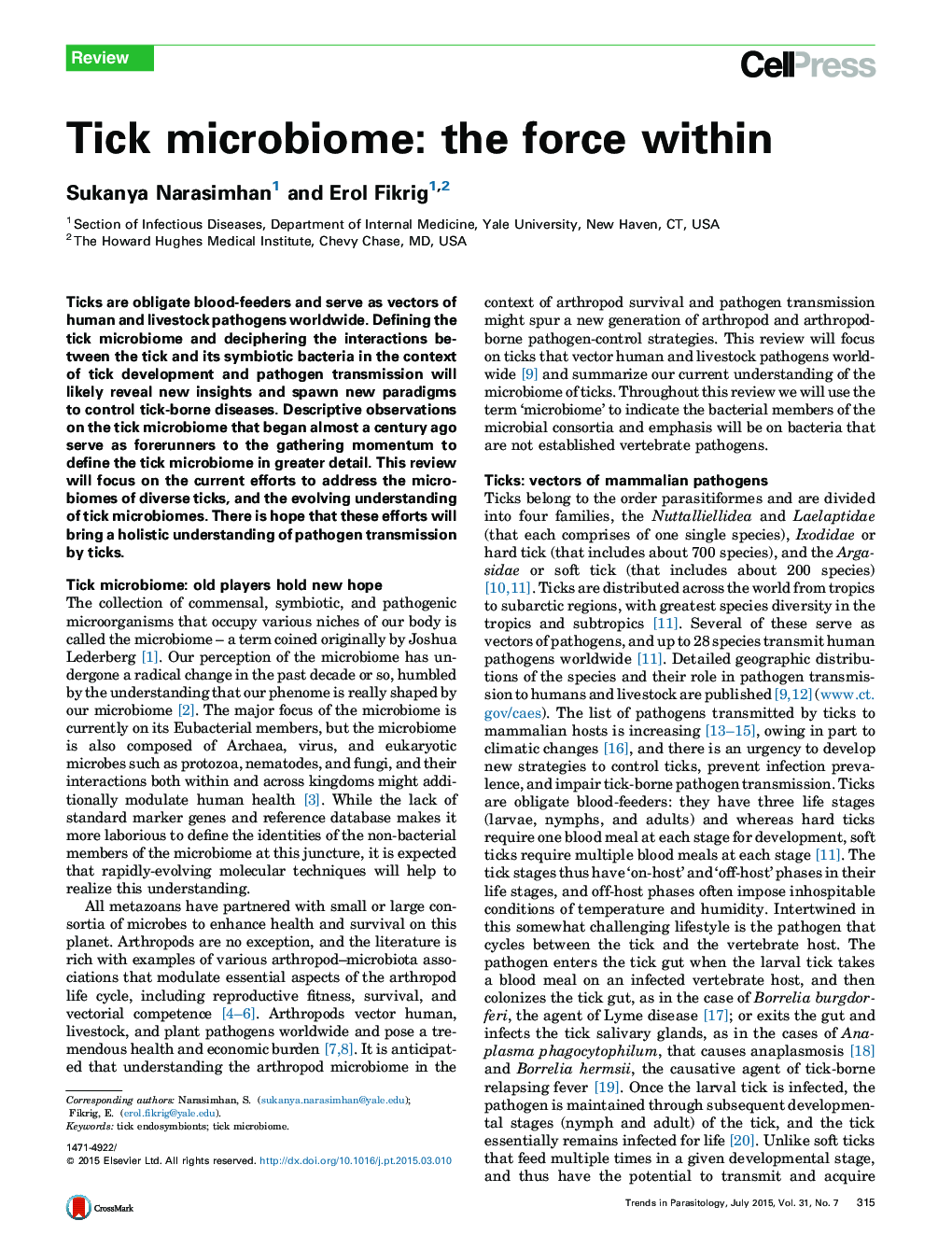| Article ID | Journal | Published Year | Pages | File Type |
|---|---|---|---|---|
| 3422952 | Trends in Parasitology | 2015 | 9 Pages |
•The tick microbiome is predominantly composed of Gram-negative bacteria of the phylum Proteobacteria.•Intracellular bacterial endosymbionts modulate the reproductive fitness and vectorial competence of ticks.•Bacterial endosymbionts stabilize the peritrophic matrix and maintain the epithelial barrier integrity of the gut of ticks.•Bacterial symbionts modulate the immune status of the gut and influence the vectorial competence of the tick.
Ticks are obligate blood-feeders and serve as vectors of human and livestock pathogens worldwide. Defining the tick microbiome and deciphering the interactions between the tick and its symbiotic bacteria in the context of tick development and pathogen transmission will likely reveal new insights and spawn new paradigms to control tick-borne diseases. Descriptive observations on the tick microbiome that began almost a century ago serve as forerunners to the gathering momentum to define the tick microbiome in greater detail. This review will focus on the current efforts to address the microbiomes of diverse ticks, and the evolving understanding of tick microbiomes. There is hope that these efforts will bring a holistic understanding of pathogen transmission by ticks.
